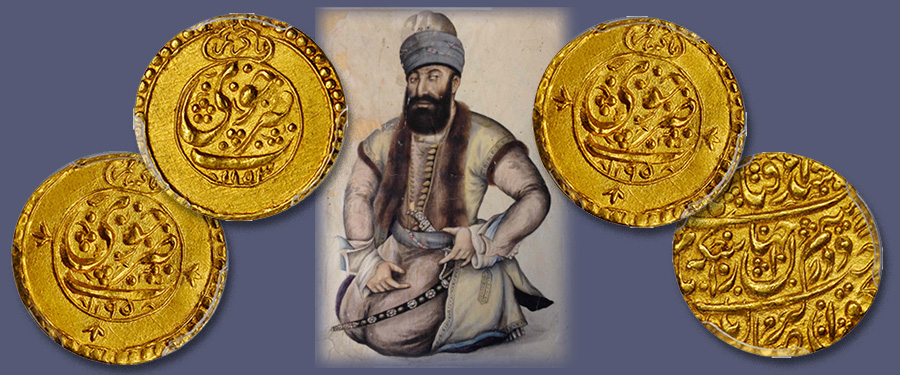
While the American colonies were in the midst of a revolution that would see them gain independence from Great Britain, Persia on the other side of the world was mostly experiencing a period of peace and relative stability following decades of infighting. The Zands were a royal house in the lands of Persia, an area roughly corresponding to the modern country of Iran and historically ruled over by such powers as the Achaemenids, Parthians, Sasanians, and Seljuks. The founder of the dynastic kingdom, Mohammad Karim Khan Zand was born ca. 1705 to a rather small tribe in western Persia, then a part of the Safavid Empire. Despite these modest beginnings, Karim rose in stature—an elevation that allowed him to take advantage of the strife in his realm, both internal (in the form of civil war and rebellion) and external (in the form of encroachment by states such as the Ottoman and Russian Empires). By the 1730s, the once great Safavids were displaced by the Afsharid Dynasty, although they proved to be rather ineffective at consolidating and retaining power. Less than two decades later, Karim formed somewhat of a triumvirate in opposition of the Afsharids and, though successful in driving the Afsharids almost completely out of power, the terms of the agreement were severely broken by Ali Mardan Khan Bakhtiari, resulting in a standoff with ultimately victorious Karim. Though not taking the title of Shah, instead preferring to use Vakil e-Ra’aayaa (Representative of the People), he would rule rather peacefully for nearly three decades, bringing relative harmony to a realm long-accustomed to the alternative. Late in 1778, Karim fell ill likely from tuberculosis, succumbing in March 1779. What would follow would be a return to the infighting and instability that preceded Karim, who would be succeeded over the next 15 years by his two sons, brother (Sadiq Khan), half-nephew (‘Ali Murad Khan), nephew, half-grandnephew, and finally, grandnephew. The Zand Dynasty would fall to the Qajars, a ruling family that would lead Persia into the 20th century and through World War I.
Our June Collectors Choice Online (CCO) auction will present a number of appealing gold issues from this interesting yet fairly brief period of Persian history. These ¼ mohurs—roughly the size of a U.S. $2.50 gold piece, though about twice as thick—feature elegant calligraphy on both sides, along with the mint and date in the A.H. calendar. Ranging in grade from PCGS MS-61 to MS-64, the quality and state of preservation is quite extraordinary. Be sure to check out these survivors from a somewhat short, tranquil period in this oft-fraught realm.
Our June 2020 Collectors Choice auction of Ancient and World Coins and Banknotes will be available online for viewing and bidding beginning June 3. The sale will be closing with a live auctioneer June 24-26. To view our upcoming auction schedule and future offerings, please visit StacksBowers.com where you may register and participate in this and other forthcoming sales.
We are always seeking coins, medals, and pieces of paper money for our future sales, and are currently accepting submissions for our Official Auction of the ANA World’s Fair of Money as well as our next Hong Kong auction. If you would like to learn more about consigning, whether a singular item or an entire collection, please contact one of our consignment directors today and we will assist you in achieving the best possible return on your material.





